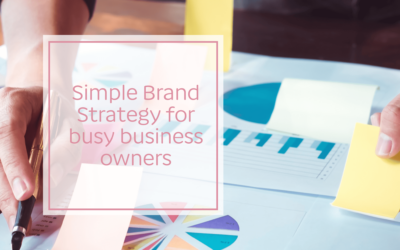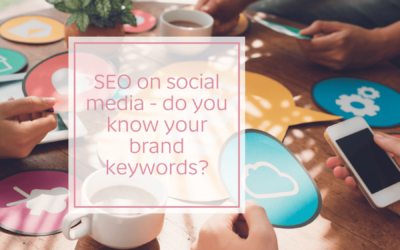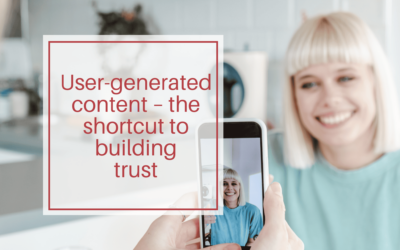Every time you post on social media, it becomes part of your customer journey. Whether it’s paid advertising or an impromptu live of you networking and meeting new collaborators, part of a formal strategy or just because you feel you should be on socials, it’s all marketing. And for all marketing, you should have a plan.
Consider this my simple roadmap to get you started, explaining the stages of a simple customer journey and how to use social media to your advantage at each stage.
The first stage of the customer journey – Awareness / Discovery
The first stage of your customer journey covers every moment before your future customer becomes aware of your brand’s existence. They may have no idea your product exists or that you exist in the market for the product they want.
This stage is where the right hashtags, advertisements, and first impressions can really make a difference. The first few times customers see your brand, they may not even be aware of their problem, let alone looking for a solution to it. Your ad pops up in their feed because of a hashtag they follow, or they see your content when searching for a solution to a problem, then they see you via an advertisement on another social channel. Every one of these touchpoints builds their awareness of your brand.
Use social media to your advantage during the awareness stage by sharing:
- Valuable content highlighting brand expertise and product or service USPs (unique selling points) that solve customer problems.
- Introductions and behind-the-scenes style posts to build connection and entice new customers to follow you to build familiarity with your brand.
Consideration / Research
Now that your ideal customer is aware of your brand (or their need for what you offer), they will check your brand out (and maybe your competitors), connect on socials, try to find out what makes you different, how your product or service solves their problem, and whether your brand is reliable and trustworthy. They will do this on your website or socials and on Google for independent answers.
During the consideration stage, your task is to have a consistent brand they recognise at each touchpoint, offer valuable content that keeps them on your social media pages or website, and show your expertise or unique selling points. It helps if you have prompt and engaged responses to Google reviews, come up as the expert when the customer searches relevant questions, and engage back quickly if they reach out in any manner to your brand – DM’s, emails, website enquiries or even phone calls!
Use social media to your advantage during the consideration phase by sharing:
- Carousels showing how your product or service solves their problem or helps them reach their goal (your professional expertise overlapping with their desires).
- Posts, lives, and reels exemplifying your business values to show value alignment (this is very important for some when making a purchase decision).
- Existing customer testimonials or short case studies showing your product or service solving a customer’s problem or improving their life.
Decision / Purchase
Congratulations – if your customer reaches this stage, you have converted them to purchase your product or service. The purchase phase concentrates on what happens when all your social media campaigning has worked. It’s less about social media strategising and more about ensuring everything else can back up your socials and branding.
Your task here is to ensure that any product or service you have advertised or shared is accurately described and has a clear path to an easy purchase.
Use social media to your advantage in the decision stage by:
- Ensuring every post, especially ads or product posts, links to your website or includes clear instructions to DM or email you for a quote or to purchase.
- Having a seamless, fast, and easy purchase process to back up your marketing strategy. Be sure to have a good web developer for the technical and a good communications strategy for responding quickly to enquiries.
Loyalty / Retention and Advocacy – the never-ending stage of the customer journey
We all want loyal, repeat customers. It’s just good business. Even brands that build their reputation on a ‘single purchase to last forever’ style promise seek to gain brand loyalty because loyal customers still upgrade to the newest version or purchase again as a gift. More importantly, repeat customers become brand loyal and then brand advocates. Brand advocates are true gold because they share how much they love your brand with friends and family, bringing new customers to the fold.
To transition customers from purchasers to loyal advocates, you should ensure that your product or service achieves what you promised, show your customers that you care about them as part of your brand family, not just a purchase number, and engage with them on all your social media platforms. Responding to positive comments is as important as, if not more important than, responding to negative ones because it builds connection and helps your customer feel part of your brand family.
Use social media to your advantage during the loyalty and advocacy stages by:
- Asking your happy customers to leave a public testimonial, either directly on socials (LinkedIn endorsements, Facebook reviews etc) or on Google My Business (which you can share on socials).
- Ensuring that you create content worthy of sharing, so your advocates can share your posts with new networks.
- Engaging regularly on social media with your audience.
- Keeping an eye out for content shared by happy customers that tags your brand, because user-generated content is pure gold to reshare!
When I work with clients, we go through each of the stages of the customer journey, map a plan, discuss the types of content that will work to target their specific audience at each stage and set SMART goals section by section. To get serious about connecting with your customers at every stage of their journey, contact me today.



